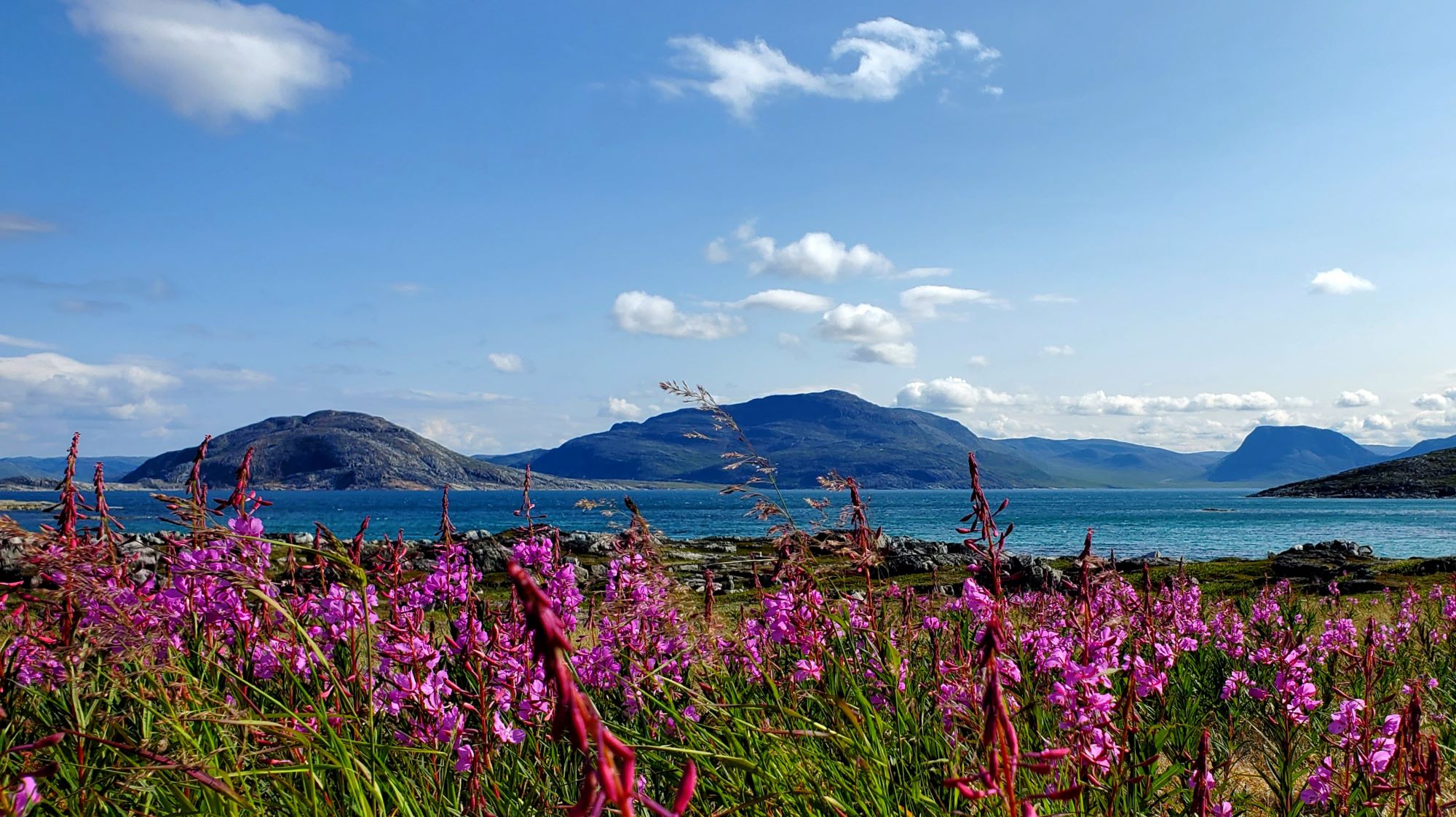
Expedition 51º: Exploring Labrador, Canada- One of the Last Untouched Frontiers
I sat on stony moss-covered ground and gazed at a pastel sunless sky, jagged mountain tops, and a glassy bay. My back was against a cold rock face—just beyond my feet, a patch of fuchsia fireweed stood straight and still, and mosquitos buzzed against the netting draped over my head and chest. I breathed in a full breath of salty sea air. It was July 21st at 4:20 a.m. and I was wearing a thick, black jacket with fluffy white fur that lined my face, two pairs of pants, and gloves, all to protect me from the mosquitos and ward off the morning chill. Low tide served up a glistening sand walkway to mounded, grassy islands.
A colony of seagulls snacked on sea creatures in the tidal flat and then, all at once, a roar of flapping wings lifted the gulls in a unified wave. The flock squawked and fluttered south . . . Silence flooded in again. I soaked in all that was the historic Inuit settlement of Hebron, Labrador: the most culturally significant place in all of Labrador, Canada. The towering Torngat Mountains loomed to my left. Dead ahead, out beyond the safety of the natural inlet and bay, was the Northern Labrador Sea, and beyond that, Greenland.
“How did I end up here?” I thought.

Sunrise Over Hebron, Labrador
The easy answer was: I was visiting friends near Ottawa, Ontario in June with my house on wheels in tow and something tugged me east. I stopped in Old Quebec City and continued up the coast of the St. Lawrence River, then north towards Labrador. It had been a month of boondocking on rivers and lakes, hilltops and deep in boreal forests via unplanned travels. A month of meeting and befriending the kindest people, and over and over being given fresh fish by strangers and new friends, so much fish that my freezer was packed to the gills. And a month of hunting down cell service a couple days a week to work and then diving back into untouched nature again. Now added to the list of adventures was my incredible journey by boat into this rugged arctic paradise.
To get to this place, I drove as far north as roads would take me on the east coast of North America and left my truck and Airstream at the dock in Goose Bay. I boarded the Kamutik W ferry for a two-and-a-half-day ride to Nain, the northernmost town in Labrador. The six small Inuit and Innu towns that dot the northern Labrador coast are accessible by boat or plane only. Once I arrived in Nain, I hired and Inuit guide, William, to take me further north by private boat, and I also stayed with his family in Nain. From Nain, it was another 150+ miles of raw nature to Hebron.
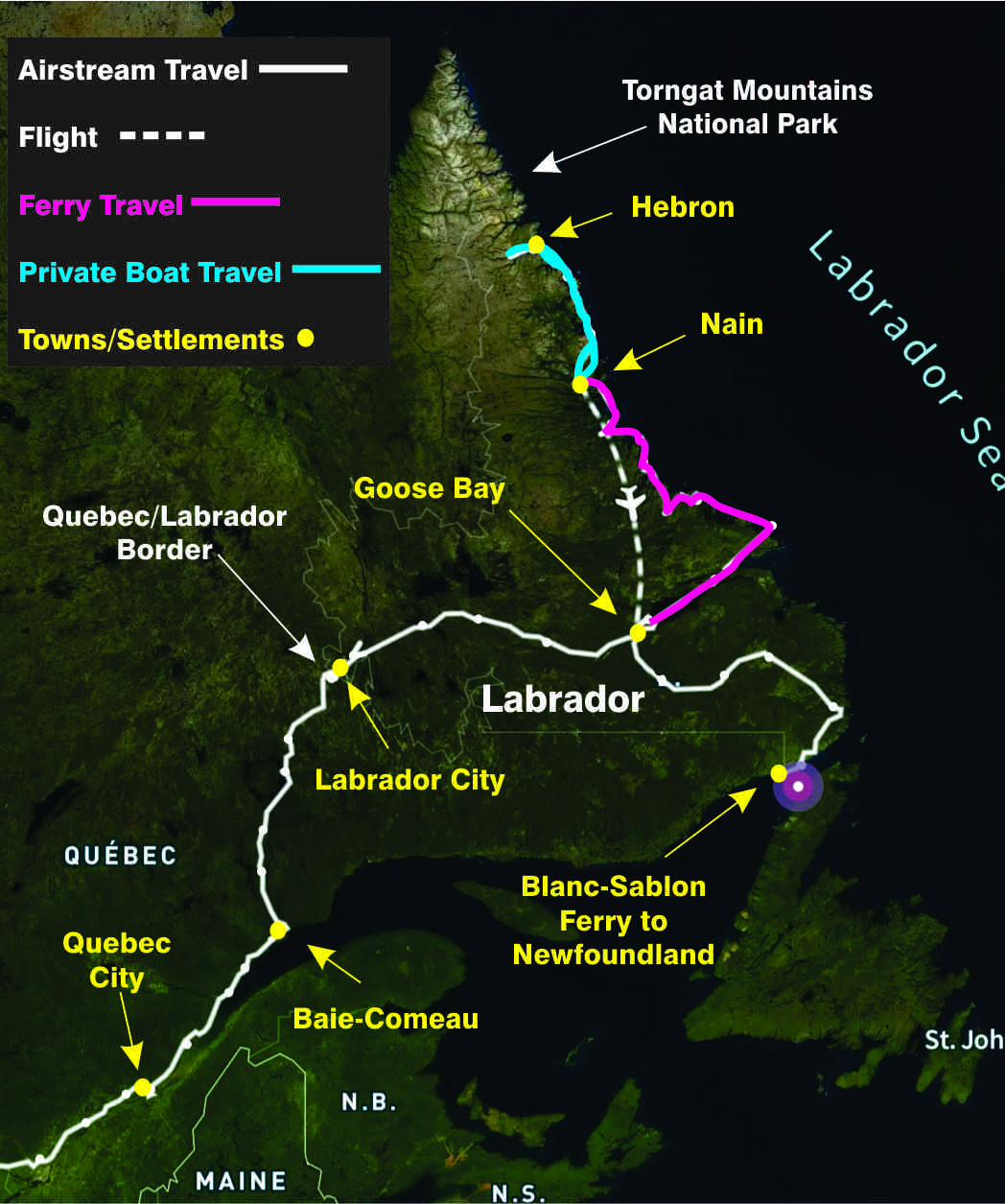
My Route
William and his family were loving and kind, and felt like family right away. With complete trust I was all in. We set off north, just the two of us, on the Labrador Sea. William and I stood, looking out over the dashboard, in a 19 foot aluminum boat with a forest-green, fifty-gallon drum of gasoline laid on its side behind us. It was secured in place with square wood stick and rocked with each wave we hit. I never would have guessed I’d hop on a little metal boat with a near stranger and a drum of fuel and set off into the wilderness, but it all felt perfect. When in Rome—err, I mean, Labrador . . .
We skirted through unimaginably beautiful seascapes and craggy cliffs. Mountains and islands grew taller and larger the further north we went: Towering, bright green grass-covered mountains dotted with patches of snow, jagged cliffs the color of rust with marigold, tangerine, and bronze swaths of minerals flaunting themselves in the bright arctic sun. And icebergs! Oh. My. Goodness! Their arctic aquamarine shimmering color is something that cannot be described and several were humongous enough to house a small town! Seals, whales, polar bears, and caribou are just a few unique species that roam the banks and swim in the waves. I was in awe for six hours straight on the boat, and then another whole day after that.
About 4.5 hours into our boat journey we spotted a sailboat offshore heading north.
“You want to go check it out?” William said.
I answered with quick nods and a big grin.
After a few minutes of chasing them I wondered what they might think of us.
“What if they think we are pirates?” William thought I was joking . . . but seriously: we were in no-man’s land, and I kind of thought we looked like pirates in our aluminum boat and rusted up steel drum.
“Do you have a white flag?”
William shrugged and laughed at my silly questions.
The sailboat was flying a British flag along with a Labrador flag. We exchanged waves and smiles and kept on going.
About an hour later we turned inland and William began sharing more about Hebron, about the Polar Bear Guard that stays there all summer, the work being done to rebuild and refurbish the church and other buildings, and more about the special land we’d soon be stepping onto. In 1959, Inuit were forced to leave their home, in Hebron, to settle hundreds of miles south in small villages, where most lived in poverty.
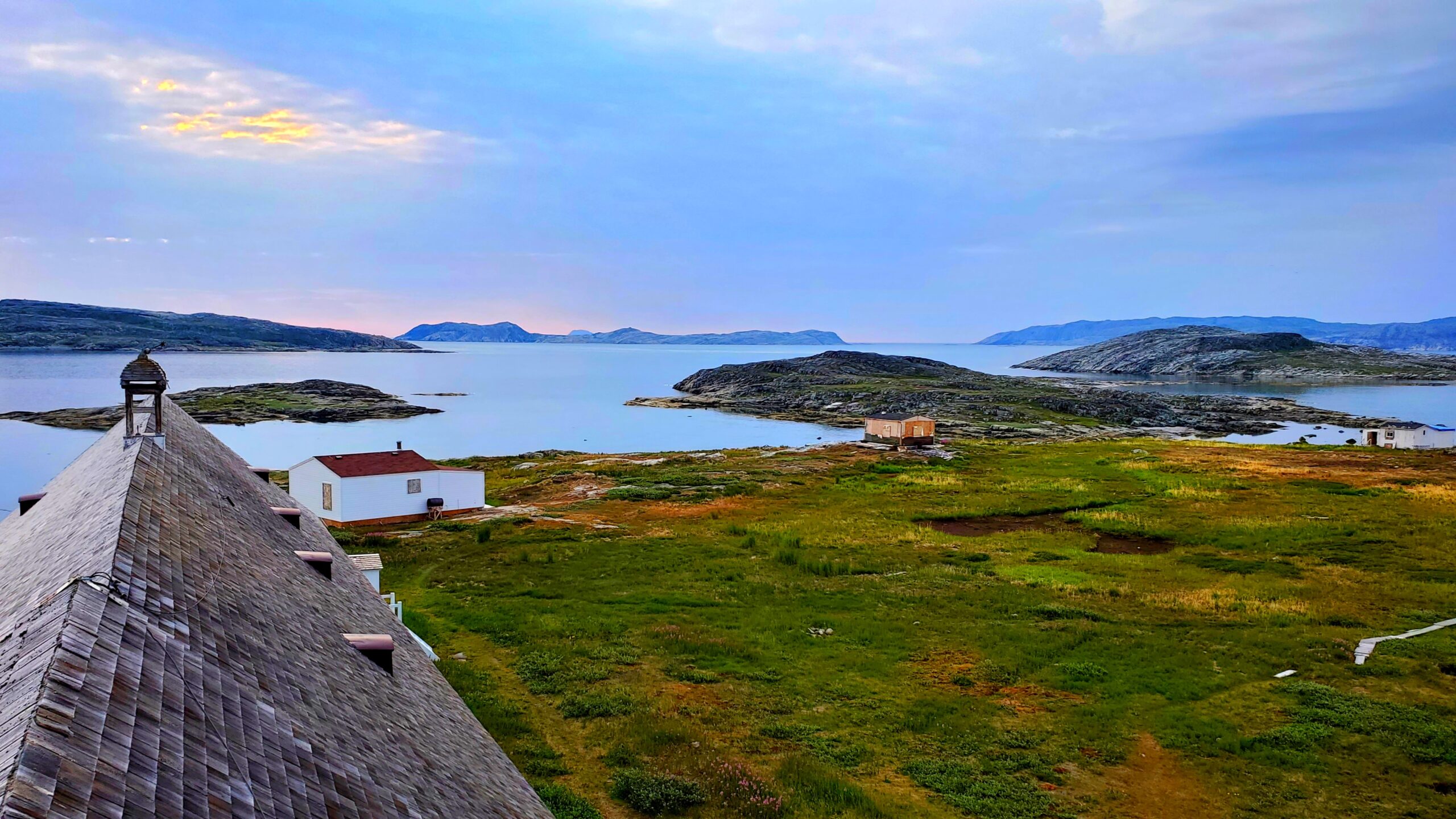
View from the Hebron Church Steeple
This area, this special, peaceful, and powerful place, this paradise continues to be a sacred space. The significance of Hebron as a place of loss, forgiveness, and ongoing healing endures for many Labrador Inuit. Thankfully, it’s far enough away from creature comforts that most tourists won’t make it this far . . . the polar bears that frequent the beaches often scare away the rest.
I was surprised that there were three Inuit volunteers stationed in Hebron for the summer to work on restoring the few structures that are left, welcome guests, and keep them safe: Joas, the Polar Bear Guard, carried a rifle everywhere he went and placed plywood studded with long nails in front of the sleeping quarters each night. Emily, the cook, welcomed guests, shared history, and kept everyone warm and fed. And Steven, the jack of all trades, made repairs, helped Joas and Emily, and caught fresh Arctic char for supper. I was beyond touched by their warm welcome, care and sharing. They encouraged me to take a walk around.
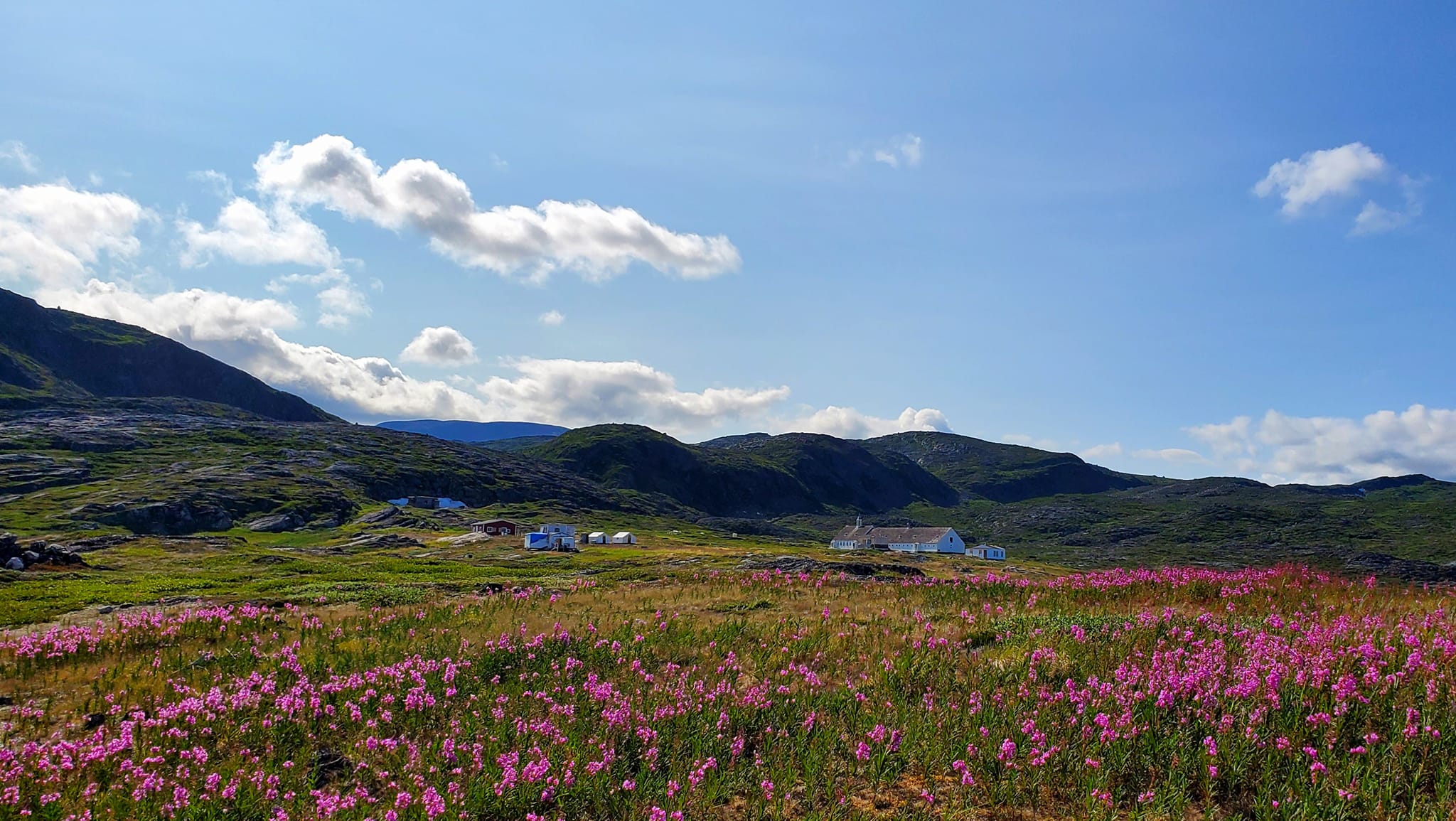
View of the Entire Settlement of Hebron
I woke up well before anyone else that peaceful morning and I sat, back against the rock, for more than two hours. Joas would have been worried had he known I was outside by myself. Although, I stretched my head up above the large rock face like a prairie dog every few minutes to be sure no polar bears were sneaking up from behind.
“How the heck am I here?” I thought.
Luck, chance, divine nudging? I could have easily been working a regular job, living in a regular house, experiencing regular old things . . . Instead, this. Tears rolled down my cheeks as waves of gratitude and awe washed up on my shores.
What I learned from my new friends, and from reading about their history, is how the Inuit received what they needed from nature. They didn’t take like society does today. So many people try to harness, use, and profit from the land. That’s not how Inuit (and indigenous all over the world) live. They not only work with nature, they learn from nature . . . they receive. And my goodness gracious does this place give. There were fish waiting to be caught (Arctic char: “Pitsik” Yum!), caribou, berries, and a fresh water stream. The daytime temperature was around 75F and it was mid-July, but there was still a humongous chunk of frozen snow (the size of a small house) to use for chilling things too.
One by one, my new friends woke up. The first was Joas, who noticed me watching the sunrise and invited me on a walk, a special serene meander to see and understand more of their history. I fell in love with everyone over and over. I wanted to stay and help, to work and learn and love the people and the land. I would have stayed until the winter sent me south. This time, it wasn’t meant to be. I hope someday.
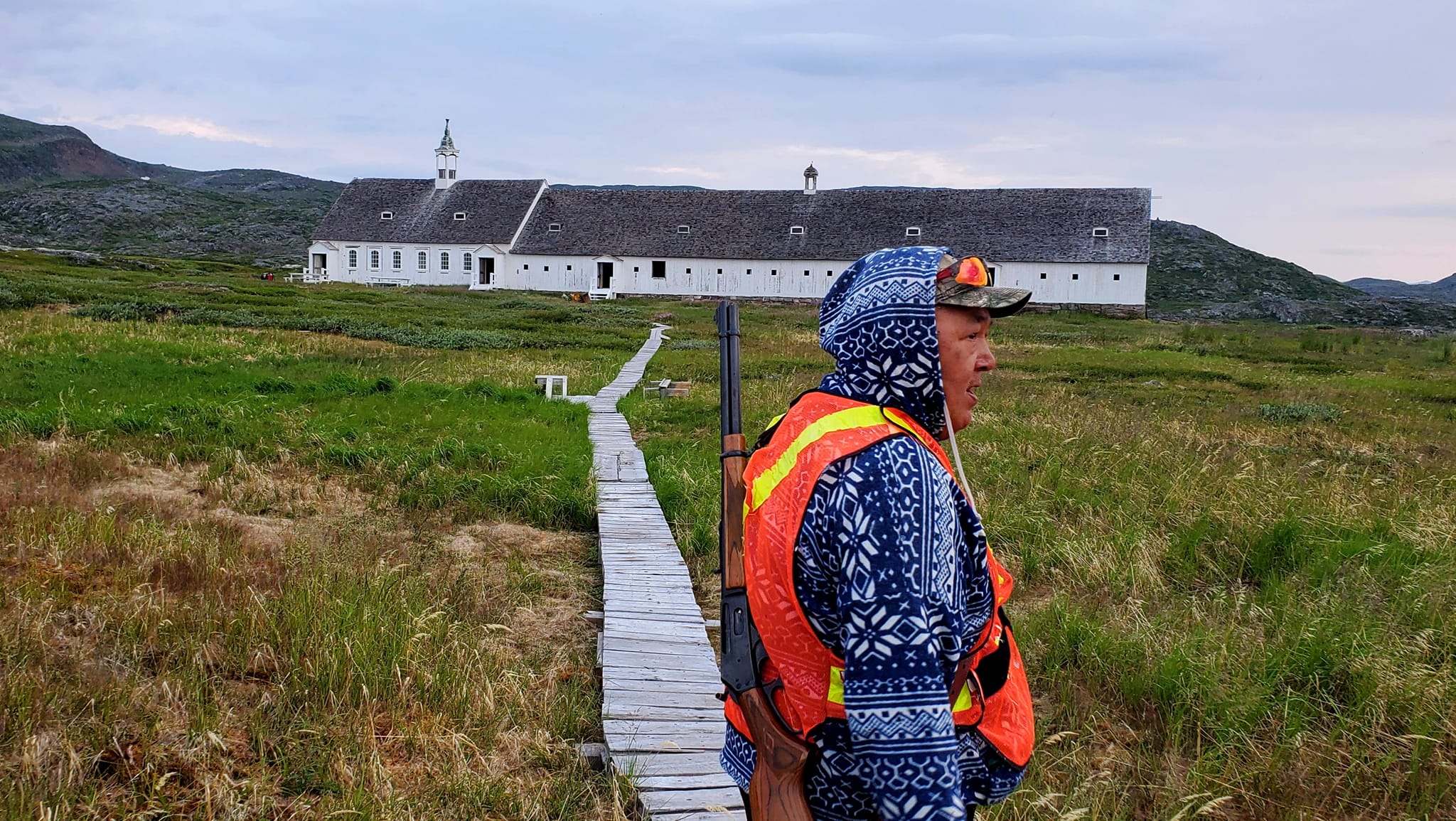
Joas, the Polar Bear Guard
By 7:30 a.m., I was back on the Labrador Sea watching the picturesque paradise shrink smaller and smaller behind our wake. Wind howled in my ears and the outboard screamed. William stood next to me, hands on the wheel, eyes focused east. I turned and hugged him. “Thank you for taking me here,” I said in a shaky voice, tears welling up again. “Thank you.”
William and I shared another seven hours of adventure on the 150 mile boat ride south, and then I spent the next day with him and his family at their home. It was difficult to leave. Over and over again on my journeys, the hardest part is saying “so long” to people who, in a few short days, became family.
Some things to note about the journey through Labrador: the rugged trek via the Labrador highway isn’t for the faint of heart. The expedition begins in Baie-Comeau, Quebec and continues for well over a thousand miles, including 150+ miles of dirt/gravel roads, and some of the paved roads in Quebec are worse than gravel! Your rig must be fully self-contained (I haven’t plugged in to power for over six weeks) and you must be mechanically sound. You’ll likely need repairs. If it’s broke, you fix it. A couple lost their brakes on their trailer and it was almost a month wait just to get into a shop. If you need a part, good luck. Come prepared and then be prepared to think like MacGyver. Many times I was thankful that I’ve collected so many tools and supplies during my six years on the road, because boy did they come in handy! Also, you’ll drive many hours through untouched wilderness with no services or gas stations. The longest stretch is over 250 miles of nothing but forest. It’s inspiring that places like this still exist! And be ready for mosquitos and black flies, and be equipped to rough it.
All that being said: What a gift. What an adventure. What a place to realize the strength of human spirit and to be embraced by loving kindness from everyone. The people of Labrador have taught me the boundless capacity to care and love. I’ve been blown away by the thoughtful kindness of everyone in this whole region.
In the midst of this remote land, the human heart bursts wide open and strangers become kin. The scenery and environment is special, but for the people here . . . there are no words. Everyone is family.
There are no strangers here . . . none.
Drinking water that’s been frozen for 10,000 years! These icebergs are from glaciers that formed in the last ice age and each summer hundreds of huge ‘bergs float south in the Labrador Sea. I asked William if he could get me close enough to touch a iceberg and he over delivered! We filled all of our bottles after this 🙂
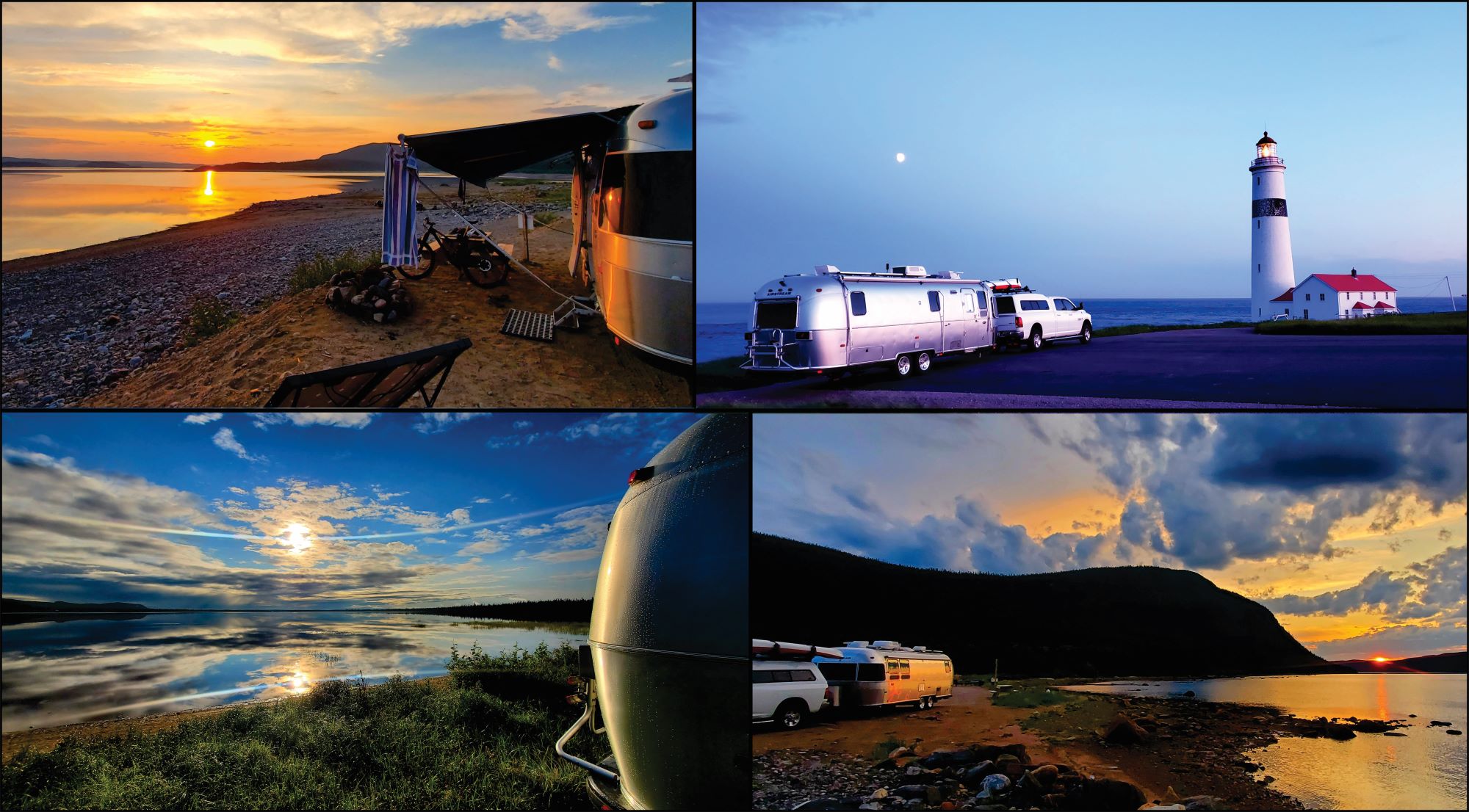
Boondocking Spots Clockwise- Sunset on Manicouagan Crater Lake – Point Amour Lighthouse – Sunset Lodge Bay – Lakeside on the Labrador Highway
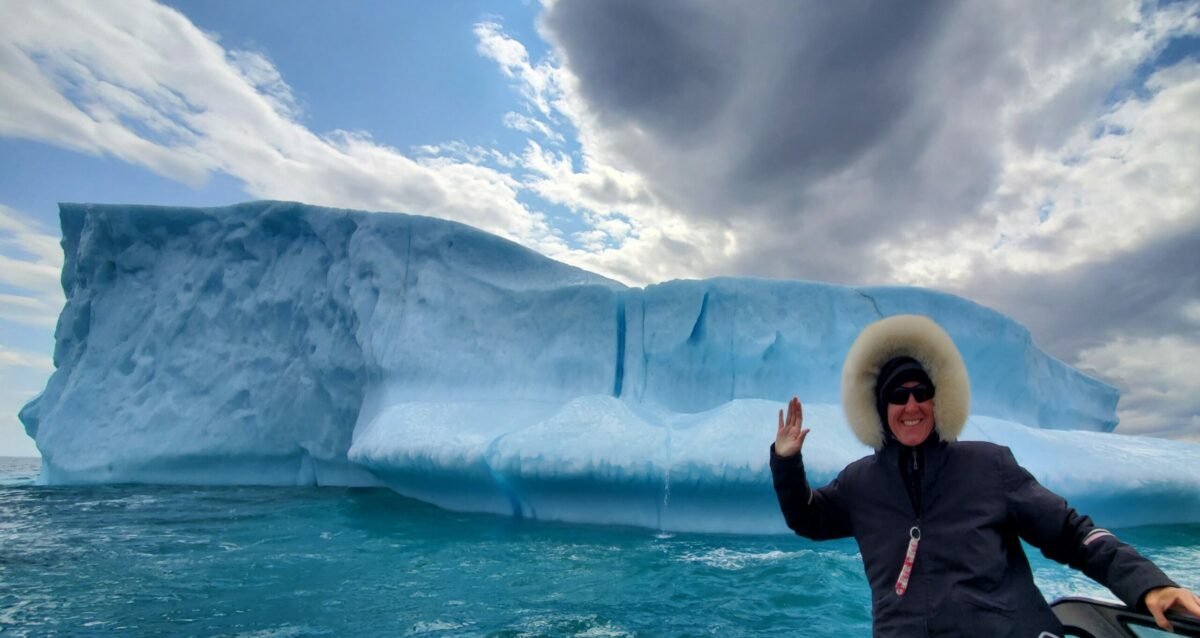
Iceberg in the Labrador Sea

Looking Out from Hebron
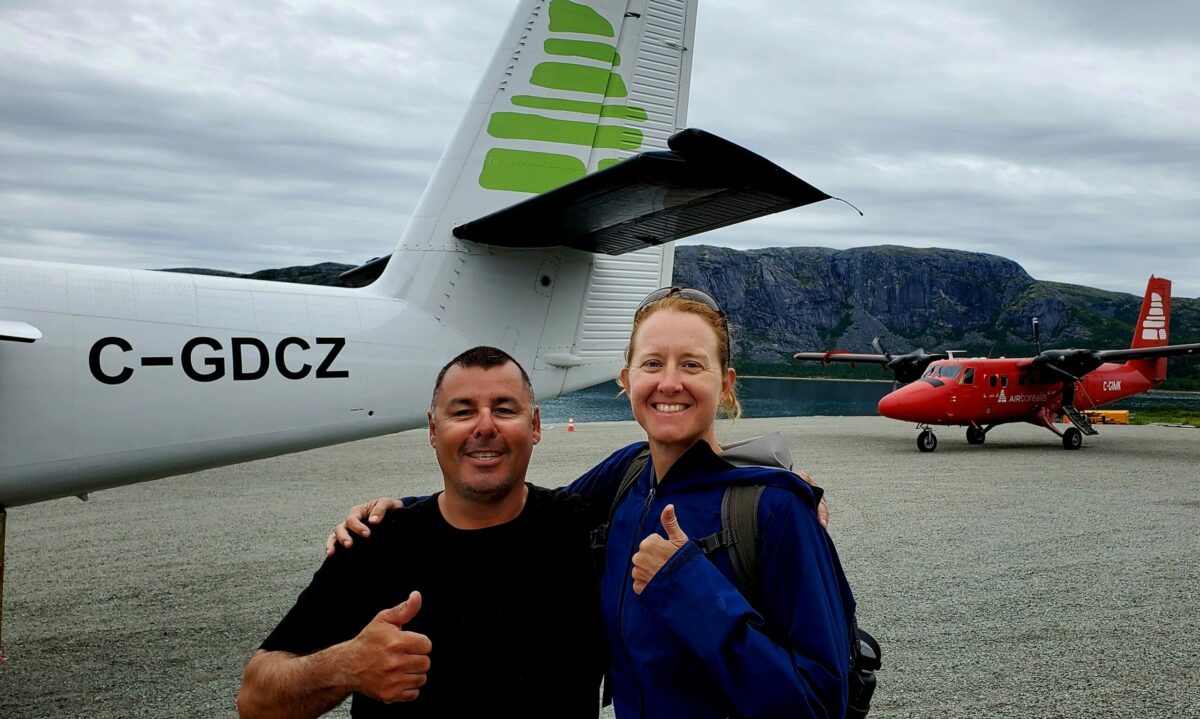
William and I before I boarded my flight from Nain back to Goose Bay
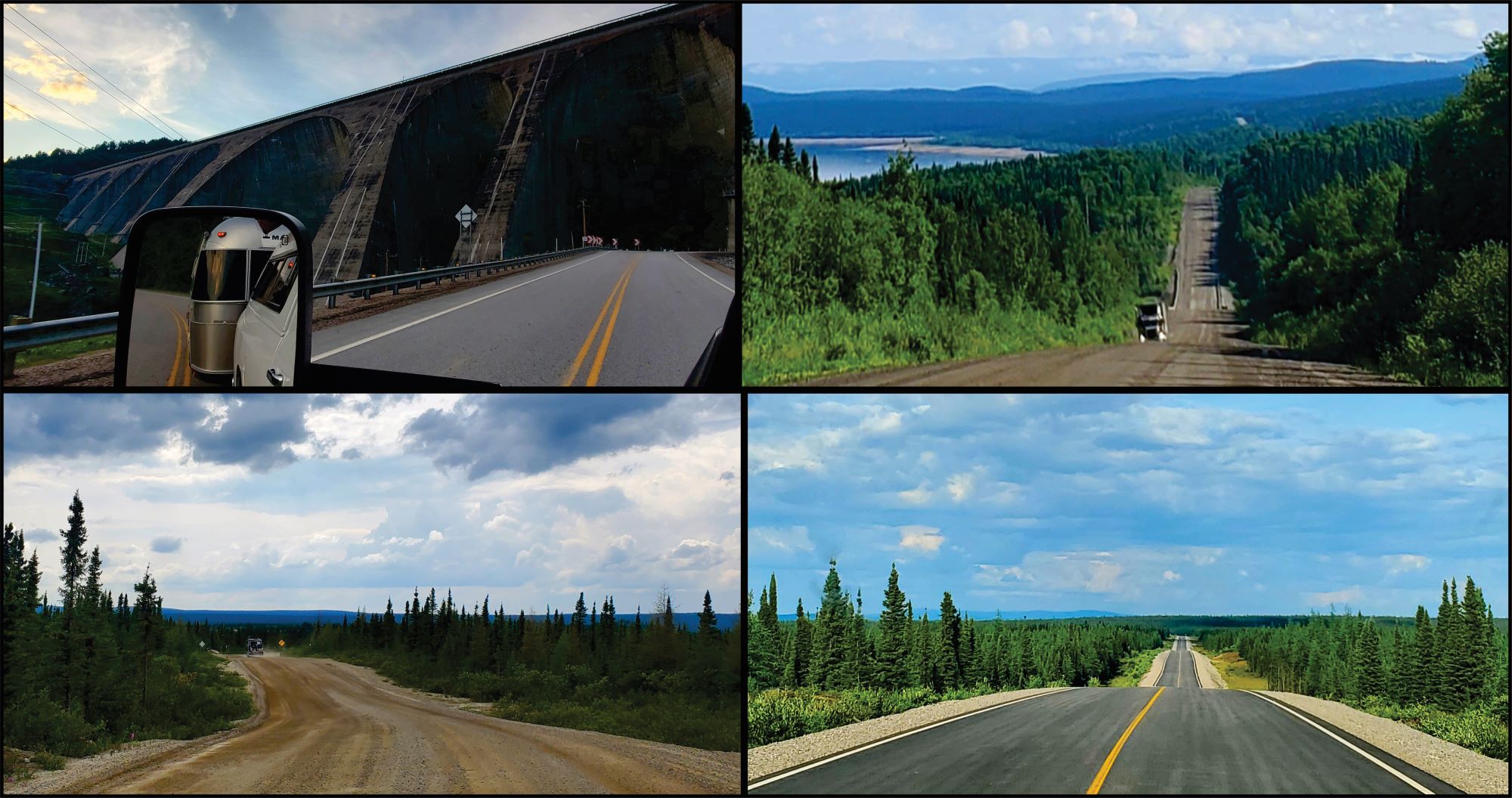
Roads Through Quebec and Labrador
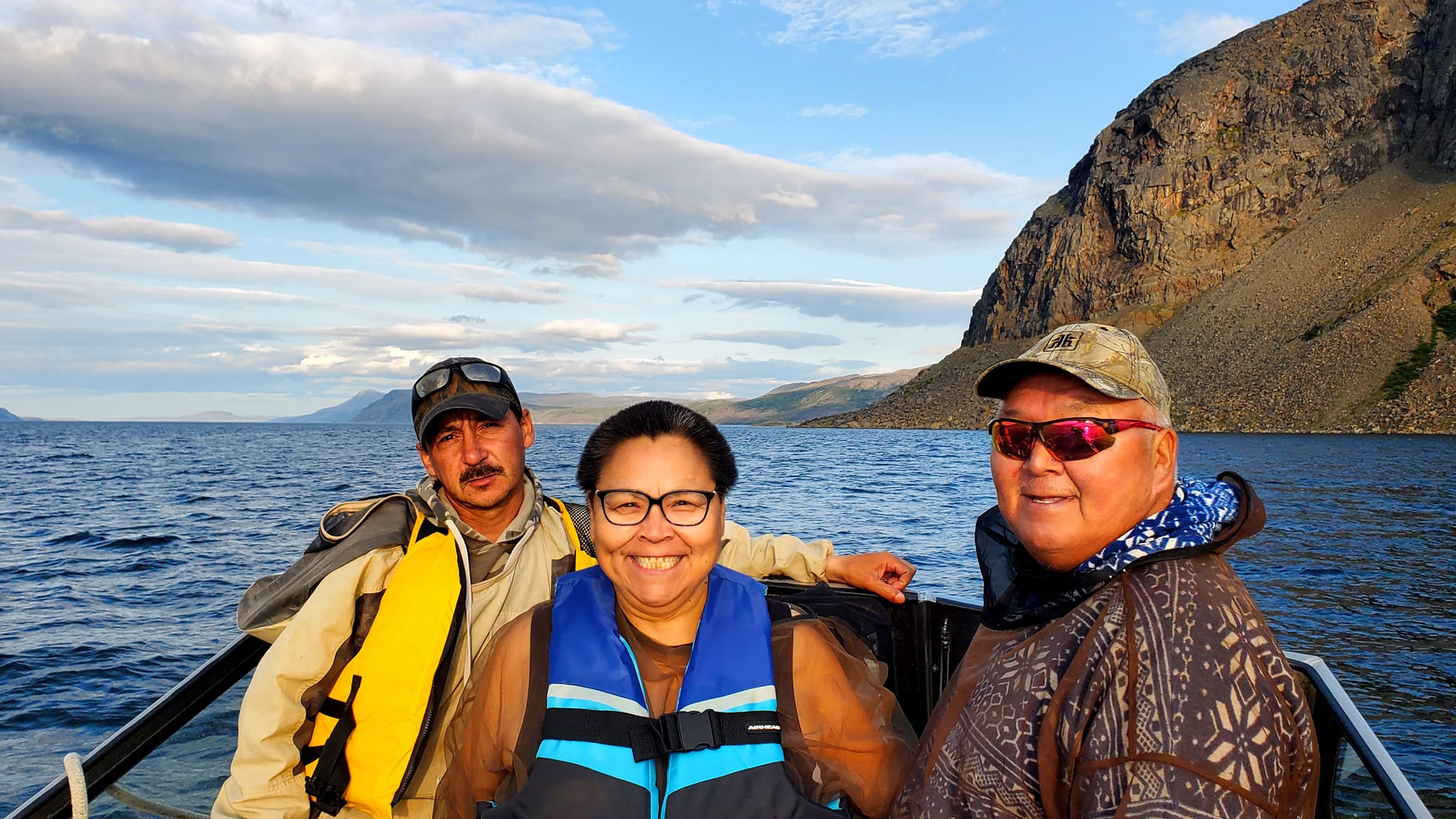
Steven, Emily, and Joas
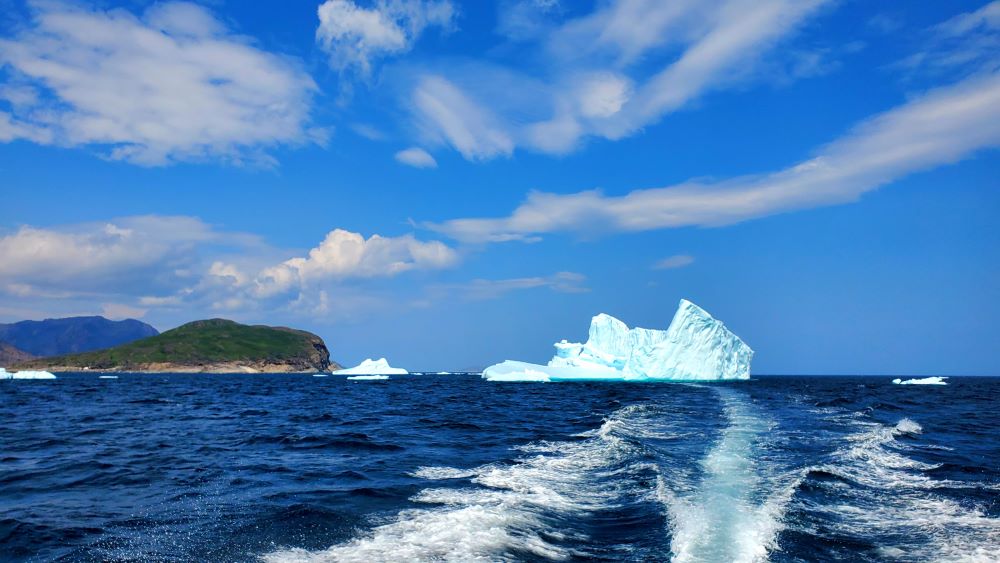
More icebergs in the Labrador Sea
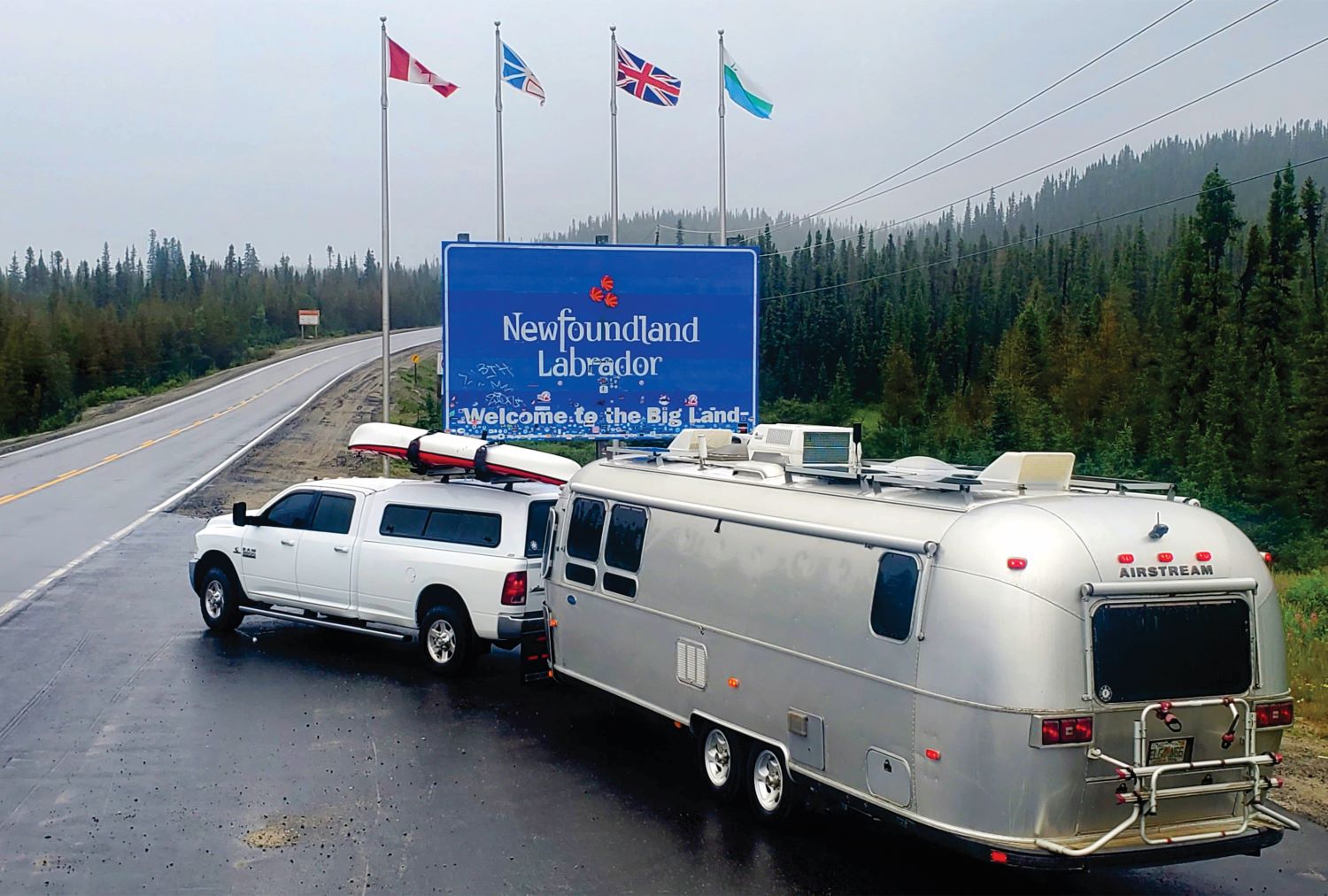
At the Quebec / Labrador Border
Would you like to live at ease and watch your stress melt away? Through one on one mentoring and coaching, you’ll realize more freedom, contentment, confidence, creativity… problems fade and decisions become a breeze. Imagine living with no fear or regrets. Curious? Your “North” is calling. Send me an email and let’s have a conversation.

Get articles like this one delivered to your inbox
If you would like to receive intriguing stories, thoughts and ideas in your inbox once every month or so, sign up for the newsletter by clicking HERE
Here are more posts:

Congratulations Kristy! Many blessings my friend!
My Best,
Winston
Thanks Winston! Sending lots of love your way.
You’re amazing! And self-sufficient!
🙂 Thanks for the sweet note, Marilyn. It’s been a long while… hope all is wonderful with you!